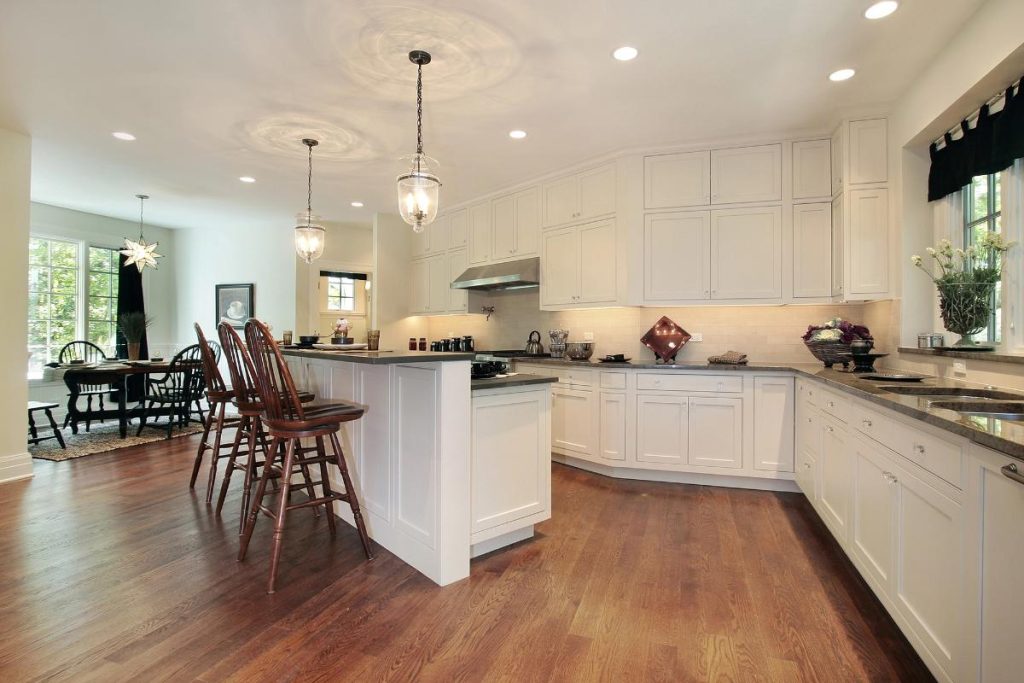Lighting has the power to completely transform a space, making it feel cozy, vibrant, or even romantic. But finding the perfect balance of light can be challenging as there are many factors to consider such as natural light, artificial light sources, and personal preferences.
Here, we will explore various tips and tricks on how to find the ideal blend of lighting for your home that both enhances its beauty and improves functionality. Read on to discover how you can create a well-lit haven that is both visually pleasing and practical!

Make Use of Pendant Lightning
Pendant lighting is an excellent choice to add a touch of elegance and sophistication to any room in your home. It works particularly well in kitchens, where the strategic placement of pendant lights can illuminate countertops and dining areas effectively. By experimenting with different heights and styles, you can create a unique ambiance that suits your personal taste. When you shop trendy kitchen pendant lighting, you’ll discover a wide array of designs ranging from modern to vintage, ensuring you find the perfect fit for your space. Aside from improving functionality, these lights enhance the overall aesthetic of your home.
Utilize Natural Light During the Day
One of the most cost-effective ways to light your home is by making use of natural light. Especially during the day when the sun is out, open your curtains and blinds to allow sunlight into your home. Natural light not only illuminates spaces but also has numerous health benefits: it can boost your mood, improve productivity, and even help you save on energy costs by reducing the need for artificial lighting during the day. For optimal natural light, consider installing skylights or larger windows in areas that lack sufficient sunlight. In winter, natural light can also help to warm up your home and reduce your heating bills.
Layer Your Lighting
Layering your lighting is a strategic approach that involves combining different light sources to achieve the perfect balance of illumination in your home. Start by incorporating ambient lighting, which provides overall illumination, such as ceiling fixtures or recessed lights. Next, add task lighting to focus on specific areas where you need more direct light, such as reading lamps or under-cabinet lights in the kitchen. Finally, incorporate accent lighting to highlight architectural features, artwork, or other decorative elements. By blending these three layers, you create a versatile and functional lighting scheme that enhances both the aesthetics and usability of your space.
Choose the Right Bulbs
Choose bulbs based on their color temperature, lumens, and energy efficiency to achieve the desired lighting effect. Cool white bulbs (3500K-4100K) are ideal for kitchens and bathrooms where brighter, more focused light is needed, and warm white bulbs (2700K-3000K) are ideal for living areas and bedrooms.
Ensure that your lighting fixtures are bright enough for each area, and choose LED bulbs to save on energy costs and extend their lifespan. By choosing the right bulbs, you can improve your home’s lighting significantly.
Highlight Architectural Features
There’s something special about a room that has well-highlighted architectural features. Accent lighting is a great way to draw attention to the decorative pieces, artwork, or architectural elements that add interest to a space.
When you incorporate accent lighting, be mindful not to overpower the area with too much light. Instead, use a subtle and focused approach to highlight these features and create an inviting atmosphere in your home.

Consider Color Schemes
Many people tend to focus on their personal preferences: maybe they like blues or reds, grays or greens, and so on. While personal taste is certainly important, it’s also worth considering the impact that wall color can have on the overall brightness of a space.
As a general rule, darker walls will absorb more light, while lighter walls will reflect it. This means that if you’re aiming for a bright and airy feel, you may want to opt for lighter tones like creams, whites, or pastels. On the other hand, if you’re looking to create a more cozy and intimate atmosphere, a darker color scheme may be just the ticket. Regardless of your preferences, keeping the impact of color on overall brightness in mind can help you create a truly stunning space that you’ll love spending time in.
Finding the perfect balance of light in your home requires careful consideration of various factors, including natural light, layered lighting, the right bulbs, and thoughtful placement of fixtures. By implementing these tips and tricks, you can create a well-lit environment that enhances the aesthetic appeal and functionality of your space. The perfect balance of light will make your home visually appealing and improve your overall well-being and daily living experience.
